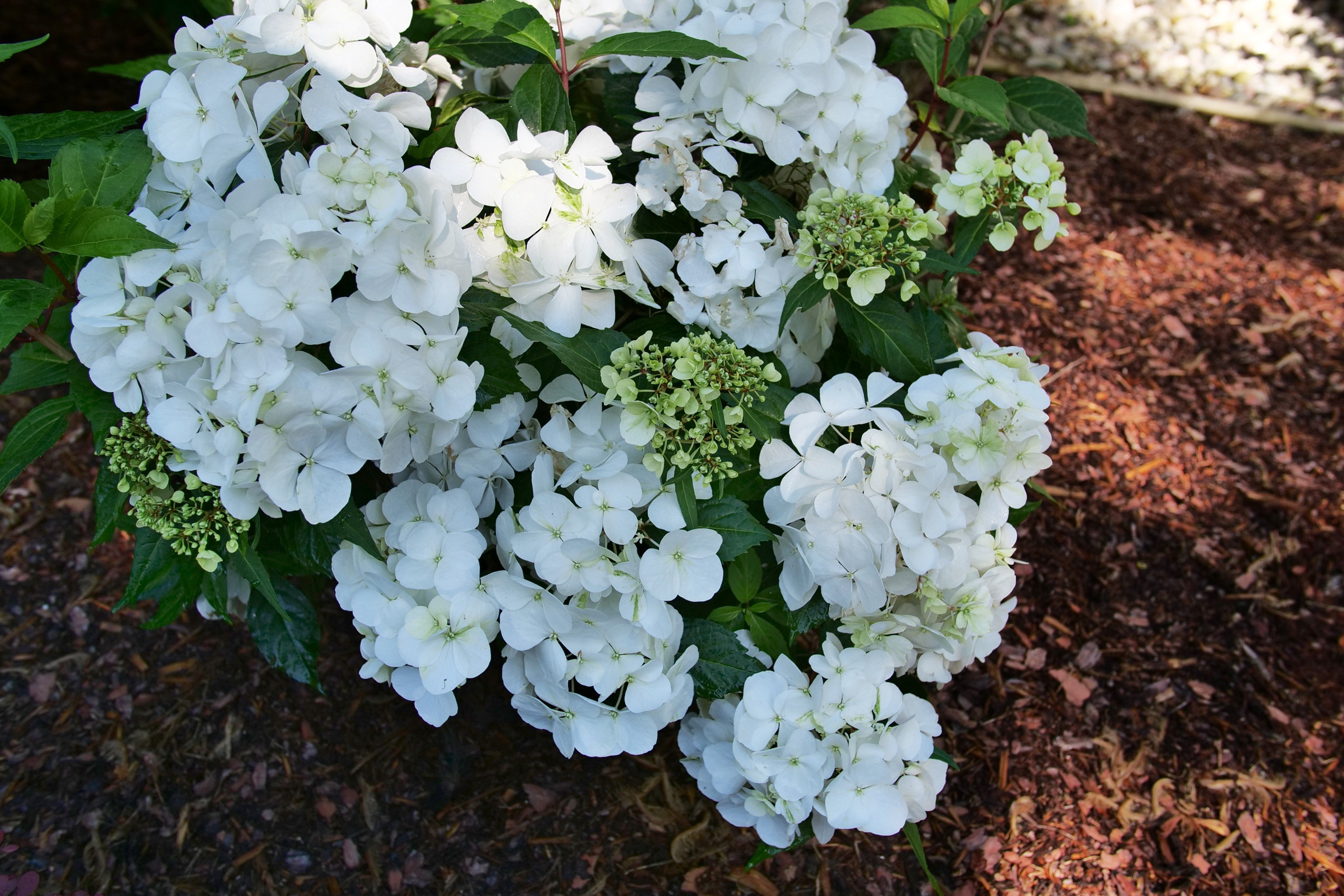Hydrangea Fairytrail White ('Wnhydfbvywmh') (Fairytrail Series)
hydrangea [Fairytrail White]
A deciduous shrub to around 100cm in height, with cascading branches of oval-shaped, dark green foliage. Masses of mophead white flowers appear from late May through to July, making an impressive addition to containers, hanging baskets or flower borders, particularly if space is limited
Size
Ultimate height
0.5–1 metresTime to ultimate height
2–5 yearsUltimate spread
1–1.5 metresGrowing conditions
Moisture
Moist but well–drainedpH
Acid, Alkaline, NeutralColour & scent
| Stem | Flower | Foliage | Fruit | |
| Spring | White | Green | ||
|---|---|---|---|---|
| Summer | White | Green | ||
| Autumn | Green | |||
| Winter |
Position
- Full sun
- Partial shade
Aspect
East–facing or South–facing or °Â±ð²õ³Ù–f²¹³¦¾±²Ô²µ
Exposure
Sheltered Hardiness
H4Botanical details
- Family
- Hydrangeaceae
- Native to GB / Ireland
- No
- Foliage
- Deciduous
- Habit
- Bushy
- Potentially harmful
- Skin allergen. Wear gloves and other protective equipment when handling. Pets (dogs, cats): Harmful if eaten. For further information and contact numbers regarding pets, see the HTA guide to potentially harmful plants
- Genus
Hydrangea can be deciduous or evergreen shrubs, or self-clinging climbers, with flowers in clusters usually comprising both small fertile and more showy sterile flowers; often good autumn colour
- Name status
Trade
How to grow
Cultivation
Grow in any moist but well-drained soil in partial shade or grow in sun if soil remains reliably moist. Improve chalky soils with organic matter to support good growth. This variety is borderline hardy and will need protection in winter in colder areas. See shrubby hydrangea cultivation for further advice
Propagation
Propagate by softwood cuttings in early summer, or by hardwood cuttings in winter
Suggested planting locations and garden types
- City and courtyard gardens
- Cottage and informal garden
- Patio and container plants
- Low Maintenance
- Flower borders and beds
- Wall side borders
Pruning
No pruning required
Pests
May be susceptible to aphids, capsid bug, red spider mite, stem and bulb eelworm, vine weevil and scale insects
Diseases
May be susceptible to a leaf spot, powdery mildews, grey moulds (Botrytis) and honey fungus (rarely)
Get involved
91µ¼º½ is the UK’s leading gardening charity. We aim to enrich everyone’s life through plants, and make the UK a greener and more beautiful place.
